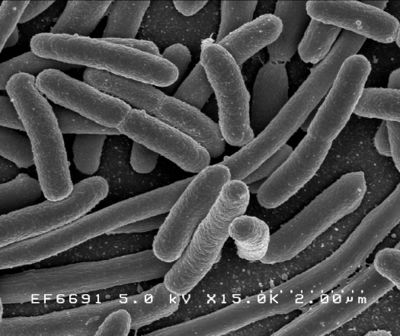Escherichia coli Justin Bosch
Overview
By: Justin Bosch
Biology

After many years of extensive research we now know that E. coli is a rod-shaped bacterium that is capable of respiring both aerobically and anaerobically depending on the presence of oxygen. This ability is more commonly known as a facultative anaerobe. We also know that it stains Gram-negative due to the bacterium's cell wall and outer membrane obtaining the color from safranin, a red counterstain. The cell wall also protects the bacteria from antibiotics like penicillin [4].
E. coli is not a picky bacterium; they can live on a plethora of substrates and laboratory media due to their ability to deal with anaerobic and aerobic conditions. They also can grow and reproduce at a wide range of temperatures; however, Escherichia coli's optimal temperature for reproduction is around thirty-seven degrees celsius.
Additionally, E. coli is an incredibly diverse species, both genetically and phenotypically. As a matter of fact, amidst all strains of E. coli, only around twenty percent of their genome are mutual or shared. Although most of these unique differences may only be distinguishable at the molecular level, they may have effects on a larger scale; such as, alter the organism's physical makeup. The vast amount of differences in this species allows for it to adapt to its distinct environment possibly; for example, many strains of the bacteria have grown to be host-specific. Some strains also have adapted to be resistant to antimicrobial agents.
